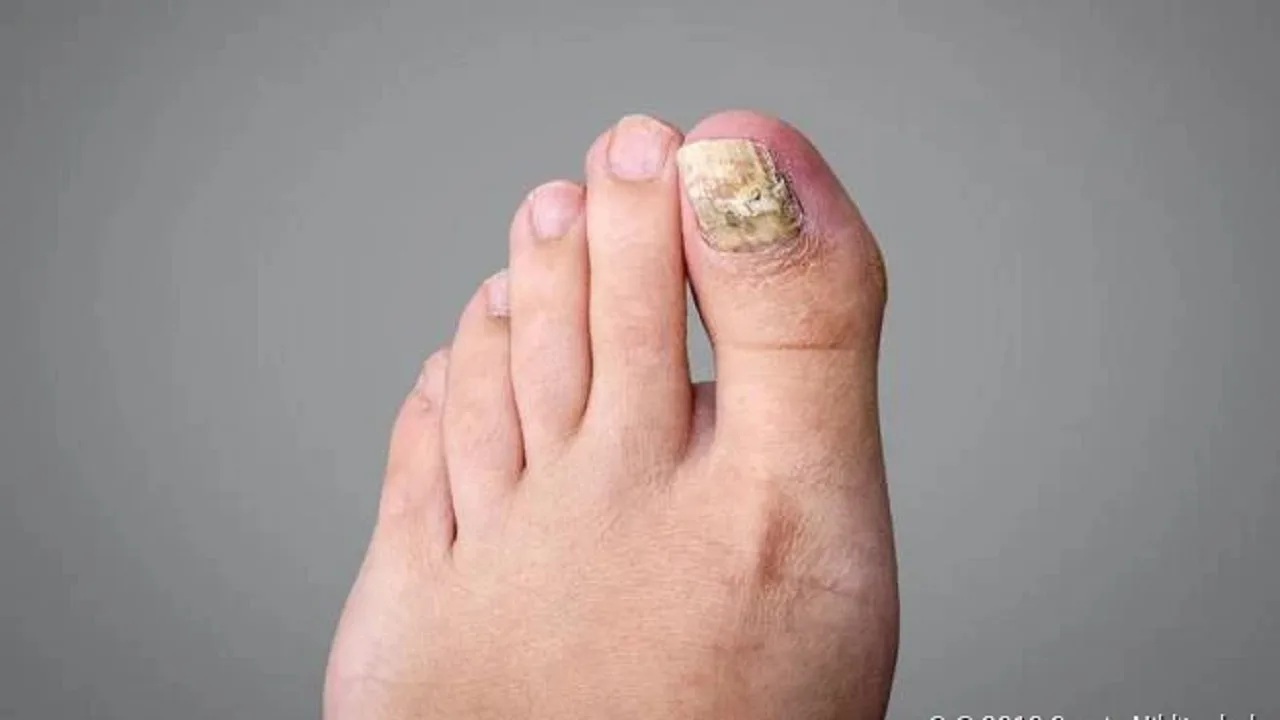Nail psoriasis is a condition in which psoriasis appears on the nails of the hands or feet. Inflammatory processes change the shape and color of the nails. Sometimes a nail dissolves or falls off. Patients need a lot of patience until the treatment of psoriasis nails shows visible results. Find out here what treatment options there are for nail psoriasis and what the causes are!
Brief overview
- Symptoms:Dotted nails, oil stains, crumbly nails, detachment of the nail (onycholysis), nail fold psoriasis
- Treatment: External treatment for mild forms, tablets, injections or infusions for severe forms (biologics, immunosuppressants, and others)
- Causes and risk factors: Hereditary predisposition, trigger factors such as mechanical stimuli, stress, or certain medications
- Diagnosis:Typical appearance of thenails, especially if psoriasis also occurs on other parts of the body
- Course of the disease and prognosis:Treatment is usually lengthy and complex
Prevention: Avoid stress, alcohol, and nicotine, and careful nail care
What is nail psoriasis?
If psoriasis affectsthe hand or toenails, doctors speak of nail psoriasis. Nail psoriasis alone rarely occurs. If the joints become inflamed as part of psoriasis ( psoriatic arthritis ), psoriatic nail changes are also often found.
In nail psoriasis, inflammatory processes occur mainly in the nail bed and in the nail matrix, from which the visible part of the nail is formed. This is fused to the skin underneath, the nail bed. If the nail bed and nail matrix change pathologically, the shape, structure and color of the nail (nail plate) also change.
Acute nail psoriasis
In the acute form, the psoriasis causes inflammation primarily at the ends of the fingers, but often also in the entire finger. The nail becomes deformed. The affected fingernails or toenails sometimes fall off completely.Acute nail psoriasis isoften very painful.
Chronic nail psoriasis
Nail psoriasis is more common in chronic cases. The nails change slowly due to inflammatory processes. They affect the nail matrix, the nail bed and/or the nail fold. Since nails grow rather slowly, thenail changes are visible for a long time.
What is the initial stage of nail psoriasis?
Nail psoriasis is noticeable in its early stages through typical features and nail changes. These sometimes occur on just one nail, and in other cases, they occur on several nails at the same time – on both the hand and the foot .
Nail changes in nail psoriasis
Psoriasis on fingernails or toenails manifests itself in very different ways: some sufferers have several nail changes at the same time, while others only have a single symptom. The following changes occur with nail psoriasis:
Dotted nails
This symptom is caused by dot-shaped indentations on the nail plate, which are usually no larger than one millimeter. There are usually several such indentations, also known as pits, on an affected nail. Dotted nails are the most common psoriatic nail change.
Stains
Sometimes nail psoriasis is manifested by white spots in the nail plate (leukonychia). Red spots in the nail crescent (lunula) also indicate psoriasis of the nails.
Psoriatic oil spot
The most common discoloration in nail psoriasis is so-called oil spots. The nails are then discolored yellowish to brownish in places. Oil spots occur when the nail bed is inflamed and skin flakes form under the nail plate.
